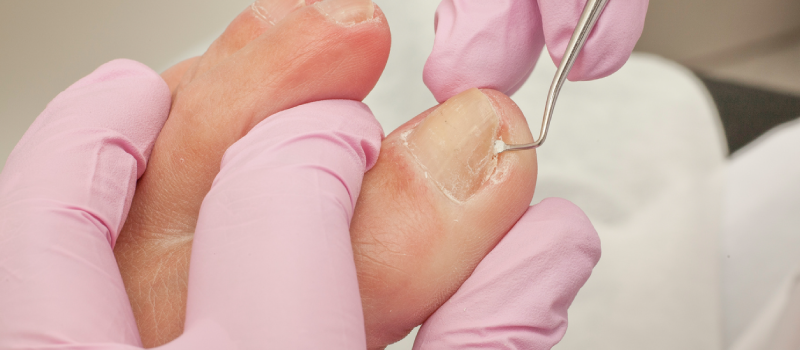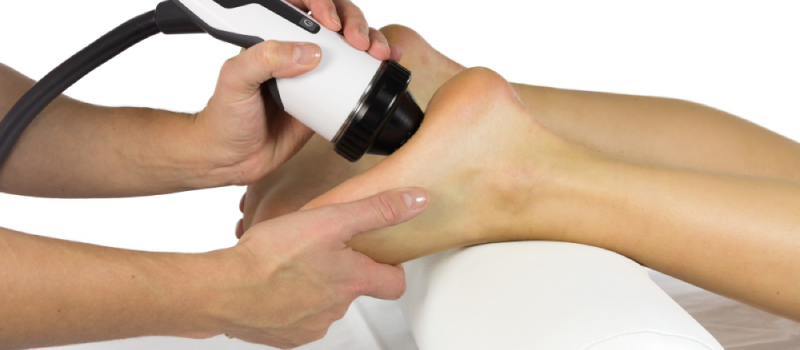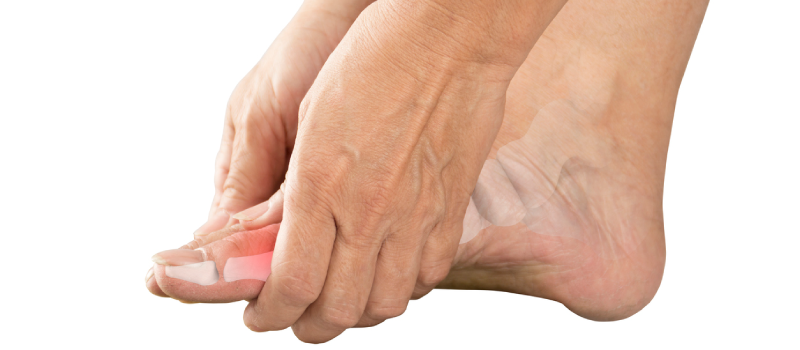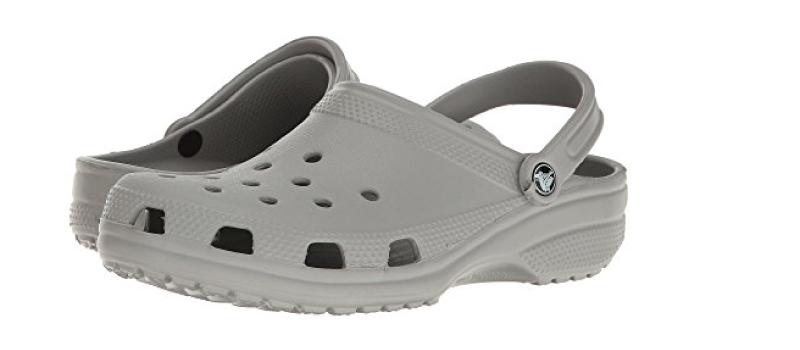Connect With Us
Blogs
vendor
Do I Need Surgery For An Ingrown Toenail?

An ingrown toenail causes a lot of pain in the toe. It can be caused by various reasons such as not wearing the right shoes and incorrect trimming of nails. An ingrown toenail can also be inherited. It often occurs due to an anomaly in the anatomy of the nailbed and the toe. The big toe is usually affected, but any toe can have an ingrown toenail. For many people, surgery for an ingrown toenail is the only solution. Home treatments can be used to ease the pain, but their affects are not long-term. For those who are looking for a long-term solution to an ingrown toenail, surgery may be the best option.
What Happens During Surgery?
During surgery, the offending part of the nail is removed to prevent it from growing into the skin. By removing a sliver of the nail, from the tip to the base, the pressure on the skin is alleviated. The swelling and pain caused by an ingrown toenail is also eliminated. Part of the nailbed is also destroyed to prevent the condition from returning. This is usually done through using chemicals. One of the chemicals that are usually used is phenol. By partially destroying the nailbed, the possibility of the ingrown toenail returning is very low to zero.
For some people, however, this treatment may not be enough. Repeat procedures may be needed every so often to treat the condition. In such cases, they may consider a more drastic surgical process like the Vandenbos procedure. In this procedure, the one that is targeted is the toe itself. The Vandenbos procedure is not commonly performed as it is a very destructive and invasive process. While the nail is completely untouched, part of the toe is eliminated on both sides of the nail. The toenail will look undamaged and intact, but a significant amount of tissue is removed. This is not only very uncomfortable, but can also take weeks to heal.
Surgery For An Ingrown Toenail
The Vandenbos procedure has been shown to be very effective, but its invasive nature has received criticism due to leaving the toes open to infection. Many patients also have reported no recurrence after undergoing the procedure. The Vandenbos technique, however, involves a longer recovery period compared to simply removing a sliver of the affected nail.
The pain and discomfort caused by an ingrown toenail cause many patients to consider all measures to stop their suffering. Surgery for an ingrown toenail is often the best way to treat an ingrown toenail at its root cause and prevent it from growing back again. There may be a lot of home remedies that you can use to get rid of the pain caused by this problem, but the relief you will get is only temporary. These remedies only alleviate the symptoms and don’t provide a long-lasting solution. However, before you consider more drastic measures to get rid of an ingrown toenail, it’s still a good idea to talk to your doctor about the best form of treatment for you.
Why Do My Feet & Ankles Swell When It Rains

Why Do My Feet & Ankles Swell When It RainsIt is quite usual for people to complain that they got swollen feet during hot, sunny seasons. But, did you know that same thing can happen even when the weather is cold? When it rains, there are people who experience pain and discomfort caused by swelling of their feet and ankles while it rains. Many people do not understand the logic at the back of this and if you are one of those people who would like to know the reason behind this then please read on to learn more about swollen ankles from rain.
So why do my feet & ankles swell when it rains? Water retention or edema gets worse during the rainy and winter seasons and that is because of seasonality of an essential nutrient, known as the vitamin D. Exposure to sun in the middle of the day leads to generation of vitamin D in your skin and that is carried out through UV-B or ultraviolet radiation. This vitamin raises your metabolic rate in a lot of ways and poor metabolic rate is almost a general cause of edema. So when your body is not getting enough amounts of this vitamin, you can expect swelling of your feet and ankles to happen someday.
Feet & Ankles Swell When It Rains
Vitamin D deficiency is also compromising calcium utilization and it is promoting tissue calcification. The calcification on the case of blood vessels can make them stiff which leads to hardening of arteries. Coupled with magnesium deficiency, the impact on the circulation and metabolic rate has been amplified. One of the possible complications is hypertension or high blood pressure.
This particular seasonal effect doesn’t take place in the tropics and the problem can be more complex in case of extreme latitudes. The temperature can also affect this because when the weather is cold, you’re more likely choose to stay inside and if you go out, you wore more clothing than the usual, which means your body will not get vitamin D. Therefore, you suffer from edema.
The issues associated with temperature come with non-D mechanism. The metabolic rate is low in those cold tissues. Thus, when peripheral circulation has been constricted then there will be advanced edema. You can easily determine it through putting your hand to your chest. When your hand feels extremely cold to your chest, you’ll find that your hands are cold while your peripheral circulation has been restricted.
Winter is likewise the season for changed eating habits. Alcohol and sugar are both proven effective when it comes to suppressing the fat-burning pathways of energy and stimulate the fat-storing systems. It may also aggravate the carb cravings that prolong the cycle. The weather may likewise be related with changed exercise habits.
Edema or swelling is likewise related with tissue puffiness underneath your eyes, snoring when sleeping and in case of serious cases, the patient may experience apnea. Though it is very typical, edema isn’t a trivial health concern. This is an indication of something that is deeply erroneous with your health’s balance. These are the most important facts that you must learn about edema and why it happens during the rainy season.
Treatment Options for Chronic Ankle Injuries

Treatment for chronic ankle injuriesAnkle injuries are usually termed as sports-related injuries as many people think such injuries are more common to athletes. However, one does not have to be an athlete to suffer from chronic ankle injuries. Something simple like walking on the uneven surface can already trigger a painful and debilitating pain. Ankle injuries could take place to anybody regardless of the age. On the other hand, men between the ages 15 and 24 years old may have increased rates of ankle sprain than women who are more than the age of 30 are more at risk than men.
Most of the time, ankle sprains can take place in case of an accident while playing. The most typical ankle injuries are fractures and sprains that involve bones and ligaments in your ankle, yet you could also strain or tear a tendon. Ankle injuries can be defined by the type of tissue, which are tendon, ligament or bone that is damaged.
Treatment Options in Treating Chronic Ankle Injuries
Fractures could be treated either non-surgically or surgically. The doctor might cure the break even with no surgery through immobilizing the ankle provided that just one bone has been broken and when the bones aren’t out of their correct positions and that your ankle is in stable condition.
The physician will perform this by placing a brace which can be used as a splint or through placing a cast. When the ankle is unstable condition then that is the time the fracture should be surgically treated. Usually, the ankle can be made stable through the use of the metal plate with screws to keep the bones in place. After the surgery, your ankle will be protected using a splint till the swelling went down and with a cast.
The bones may take as much as 6 consecutive weeks to heal and your doctor would advise that you keep weight off the affected ankle at this phase so that the bones will be able to heal correctly. Tendons and ligaments may take more time to heal after the fracture has been completely mended. The time needed may go as lengthy as 2 years to experience no pain when moving and walking. Though, in many cases, patients are able to go back to their usual daily routine in 3 to 4 months.
When the doctor is sure that it will not cause any harm when you begin moving your ankle, you might require physical therapy in order to render gait training, strengthening, balance, as well as mobility exercises. The therapist would develop the home program you could use in order to regain the old normal functioning of it. This might take for you to go back to your normal walking pattern with no limping.
Meanwhile, the treatment for sprain will depend on the seriousness of the injury. The treatment can be graded as severe, moderate and mild. Surgery isn’t typically a treatment option for sprains except when the damage to your ankle was extensive wherein more ligaments were affected and if all the other treatment options did not work.
EPAT Treatment in Long Beach

EPAT Treatment Long BeachThere are many people suffering from foot pain issues and they try every possible solution for relief. A more recent method in podiatry is Extracorporeal Pulse Activation Technology (EPAT) which is becoming a major therapy for patients. Approved by the FDA, EPAT is a highly effective treatment for chronic or acute muscle pains, tendon inflammation, and more. The facility at Long Beach, California is a great place to be treated with EPAT and offers exemplary service.
EPAT Treatment in Long Beach
The procedure is simply a noninvasive process that allows for the affected tissue to heal and recover. Moreover, EPAT treatment at our Long Beach office involves a doctor applying gel to the damaged area and the device is moved in a circle across the area, releasing waves of pressure to gradually relieve the tissues through regeneration. Typically, this process takes 15 minutes and is repeated 3 times at weekly interval sessions before effects are seen. Numerous patients praise the treatment and say that they are pain-free immediately or soon after undergoing the procedure.
What is EPAT Treatment Used For?
EPAT is used to treat a multitude of podiatric related problems, including heel pain, bursitis (inflammation of a bursa), achilles tendonitis, a number of sports injuries, and trigger points of pain. This is a partial list of ailments, but ask your podiatrist for more information in detail about whether EPAT is right for you.
There are countless benefits from the EPAT procedure because patients do not have to be concerned about the use of anesthesia and any risks since there are almost no side effects or issues related to performing EPAT (by a qualified medical professional). As mentioned earlier, the EPAT process does not involve any incisions and therefore, no possibility of serious infections. Another huge factor is the cost effectiveness of EPAT since it is covered by a majority of insurance plans and provides a quick solution for 80% of patients who have positive feedback from the new technology.
Long Beach EPAT Doctors
Patients who undergo the EPAT procedure can return to everyday activities within 24-48 hours afterward. Without any long term recovery time, patients can continue their daily life and resume strenuous activity in 4 weeks afterward. This lets people heal and move on with their lives while starting to live free of pain. Going to an office such as the one at Long Beach will have a calm setting and patients ought to be relieved within a month.
The EPAT procedure is a newer and quality solution for countless patients out there with podiatric issues. Being cost effective, patients also have the option to return to their normal lives immediately and to strenuous activity weeks later. All in all, EPAT is an effective podiatric treatment for all sufferers to think about.
If you are considering EPAT based on a recommendation, we encourage you to contact our Long Beach office to schedule a consultation.
Know the Difference between Achilles Tendonitis and Achilles Bursitis

Achilles tendonitis vs Achilles bursitis; this is a highly debated topic among those who are in pain. Many individuals get themselves confused about the differences between Achilles Tendonitis and the Achilles Bursitis. If you wish to know more about the difference between the two, read on.
Get Yourself More Familiar with Achilles Bursitis
Achilles tendon bursitis, otherwise referred to as Retrocalcaneal bursitis is a typical foot condition that affects and annoys athletes, especially runners. It can frequently be confused for Achilles tendonitis or can likewise happen in conjunction with Achilles tendonitis.
Indications incorporate pain at the back of the heel, particularly when running tough or on delicate surfaces. There will be fragility and swelling at the back of the heel which make it harder to wear certain shoes. At the point when squeezing in with the fingers both sides are the back of the heel, a light resistance might be felt.
Learn More about Achilles Tendinitis
Achilles tendinitis is a known condition that causes pain along the back of the leg close to the heel. The Achilles tendon is the biggest tendon in the body. It interfaces your calf muscles to your heel bone and is utilized when you walk, run, and hop. In spite of the fact that the Achilles tendon can withstand extraordinary burdens from running and bouncing, it is somehow linked to tendinitis, a condition connected with abuse and degeneration.
Description of this Condition
Basically characterized, tendinitis pertains to the inflammation of a tendon. This inflammation is the body’s characteristic reaction to harm, and frequently results to swelling, torment, or fretting. There are two kinds of Achilles tendinitis depending on damaged parts of the tendons.
The Achilles Tendinitis Causes
This Achilles tendinitis condition is commonly not identified with a particular damage. The issue results from tedious anxiety to the tendon. This frequently happens when you push your body to do much or do too soon, yet different variables can make it more prone to develop tendinitis such as
Sudden increment on power or sum of action activity—for instance, increasing particular distance you run each day by a couple of miles without allowing your body to change in accordance with the new set distance
Tight calf muscles—Having tighter calf muscles and sudden start of a forceful fitness program can actually put additional weight on the Achilles tendon
Bone spur- Added bone development where the Achilles tendon joins the heel bone can actually rub against tendons which typically to lead to pain.
The Achilles Tendinitis symptoms include pain and firmness along the Achilles tendon especially in the morning, pain along back of the heel or tendon that exacerbates with action, severe pain during the day and more.
Upon learning all this information regarding, Achilles tendonitis vs Achilles bursitis, individuals can now easily distinguish the condition from the other.
On the off chance that you have encountered a sudden “pop” in the back of your calf or heel, you are advised to see your specialist promptly especially if you think that you might have torn your tendon.
Differences Between a Sprained and A Broken Ankle

Differences Between a Sprained and A Broken AnkleWhen you experience an ankle injury, you can notice that it is really a depressing one. This is especially when you will have to practice for your upcoming game or will have to jog anywhere. And, an ankle issue leads you further to being disabled on a temporary basis. You may also not able to walk properly due to this medical issue.
Actually, it is one of the most common injuries that are obtained from playing games like basketball, volleyball, tennis and a whole lot more. Ankle sprain usually lasts for a short period of time; however, a broken ankle might take some days for it to heal completely. And, it mainly requires one of going through regular checkups and exercises.
What exactly is the Difference of Sprained Ankle and Broken Ankle?
A sprained and a broken ankle are exactly two different things. To best understand their difference, any issue such as a chip, a crack or a break in the bone of an ankle or anklebone is considered to be a fracture/ broken ankle. The sprained ankle is actually an ankle injury with the disruption or tear in the ligaments. The ligaments are the fibrous tissues with the purpose of holding the bone in the joints.
That severe injury in the ankle actually consists of both issues; sprain and fracture. This now depends on how extreme the severity and the sprain and fracture type. Actually, the ankle sprain can vary from mild to severe. This is also commonly experienced by the athletes and is described as the common sports injury.
Key Differences Between a Sprained and A Broken Ankle
With broken ankles, these usually demand a lot of attention especially when it comes to medications and treatments. It is also more likely to become a severe ankle injury. If the pain and the swelling do not stop within 24 hours or even after 2 days, it is now suggested to consult a doctor and go through a proper treatment. There are times that the ankles become completely deformed, get weak and get dumb. Thus, consulting a sports medicine expert or even a physician is strongly suggested.
The pain and the swelling in the ankles indicate sprain and broken ankles. Actually, the sprain often occurs in the wrists and in the ankles and the broken ankle occurs in the ankles. With sprain ankle injuries, these may also bring more bruises to the affected area and cause more pain and swelling. On the other hand, broken ankles sometimes require surgeries for them to be repaired. And, this way, the dislocated bones can be fixed right away for good and fast recovery. Thus, medical attention is likewise needed.
It is also important to know the difference between the sprained ankles and broken ankles. As compared to the sprained one, the broken ankle is even made more severe that causes an individual to suffer from being unable to walk temporarily. This also gets severe when not properly treated and medicated. This injury often occurs in players and athletes.
Am I OK To Fly With a Sprained Ankle

Traveling could mean a big challenge especially when you are not feeling well. You could just imagine a long period of sitting and walking on museum floors leaving you even more in pain. Flying with a sprained ankle first requires treatment that helps avoid worsened symptoms and damage throughout the trip.
To clear things out, you can still even fly with a sprained ankle but you need to be ready as your leg can be left dependent or hanging down over a period of time. This only further increases stiffness and swelling you felt from the very beginning.
Ankle sprain is actually an injury wherein the foot turns over on the legs while the ligaments are stretched out. By consulting a doctor, he or she will be ready in determining if it is a sprain.
How Do I Know If I’m OK To Fly With a Sprained Ankle
Even though, as mentioned, you can still fly with a sprained ankle, it does not necessarily mean that it is no longer dangerous. When you stay for hours on an airplane, it could lead to more pain and swelling that just staying off, elevating it and icing it.
It could also be possible that if there is an increased swelling, you could potentially develop DVT or a “deep vein thrombosis” or clotting in the leg. It is suggested by health experts to wear “TED hose” or “compression stockings” that can help control the swelling.
If you will ask about how long a sprained ankle can heal, it will still depend on the severity of the sprain. It usually takes one week or more when it is not properly treated. That is the main reason why it is advised of you to consult with your doctor.
The good news is that there are some essential things you can do in healing a sprained ankle. Among those things include the application of ice, cross training, ice and physical therapy. It is a lot better if you will consult an ankle and foot surgeon as he or she can guide you through all these things.
For instance, RICE is a protocol known for alleviating the pain and the sprain in your ankle. RICE actually means rest, icing, compression and elevation and is known to work well during the acute stage. When the pain has completely healed, you can already begin walking by means of utilizing your ankle support. This can help further prevent injury for the second time around.
Especially when you make use of a stiff sole, it can bring you more stability for exercises and walking activities and can help your motion. In the event that the symptoms still persisted, it is suggested to seek treatment because you may already have the so-called torn or fracture ligament. Pain medications or anti-inflammatory medicines may not help ease the symptoms away and improve the results after.
If you think you can fly with a sprained ankle and you can handle the long hours of sitting, you can book for your flight any moment from now. Be extra careful as well for your safety and security!
3 Summer Shoe Styles That Can Cause Injuries

3 Summer Shoe Styles That Can Cause InjuriesWhen it is summer, it’s almost synonymous to beach and fun. During this time, people are all busy planning for a summer vacation by the beach, which means that you have to set aside your shoes and boots this time around. This season is the time to wear appropriate slippers like flip flops and sandals as you can see the people around you doing.
3 Summer Shoe Styles That Can Cause Injuries
Sandals and flip flops are the norm during summer but it is important to know that not all summer shoes are equal or ideal. There are actually summer shoes that while great looking can actually cause injuries. That makes it important for you to learn more about the different shoes that can cause injuries and be able to choose the right shoes for you.
On that note, here are 3 summer shoe styles you should know that puts you at risk with foot injuries. Read on and find out why these summer shoe styles are likely to cause you injuries. This way, you can choose which styles of shoes are better for you or at least learn how you can prevent getting injuries while wearing these shoes.
Peep-Toes, Mules and Similar Styles
Any shoe styles that lets your foot to slide out of place and makes you grip to the shoe with your toes is a risk. These kinds of shoe put you at risk with hammertoe which is a condition where the toe-joint become abnormally bent. To prevent this from happening, better choose the kind of shoes with enough straps to secure your foot, back and front.
Flip Flops
Of all the summer shoes that can cause injuries, the flip flops are considered the worst offenders. With flip flops, it is easy for your foot to slip out of place which could likely cause ankle sprain. At the same time, flip flops don’t offer enough support or cushioning for the heel, which can cause plantar fasciitis. There’s just a lot of risk for injuries when it comes to flip flops.
Wedge Shoes
One of the summer shoe styles that could cause injuries is the wedge styled shoes. The biggest hazard to this is the side-to-side instability. With that, it is easy for you to lose your balance in wedge shoes and then twist your ankle resulting to sprain. Aside from that, wearing wedges shifts your weight forward to the ball of your foot. When that happens, you are at risk to foot inflammation and mid-foot pain. In some cases, because they are usually of high heels, these shoes can cause fracture.
These are three of the common summer shoe styles that are known to cause injuries. Wearing are likely to put you at risk in injuries, some mild but others can be relatively serious.
When using these types of shoes, it is best to exercise caution or at least don’t wear them for the whole day. It is best to wear the kind of shoes that you’re most comfortable with and will not put you at risk to injuries.
Are Crocs Bad For Your Feet?

Crocs first came out the market back in 2002. They are rubber clogs that act as boater-floaters which has now sold over 300 million pairs in about 90 countries. A lot of people have tried a pair of Crocs – some love them, some hate them – but it sure is here to stay.
One of the reasons why people love Crocs is that they are comfortable to wear and convenient to slip on and off. With the floatability and rubbery attributes of Crocs, people cannot help but find it real comfortable to the feet. Crocs are also practical for wear, especially when you have to step in somewhere or something, which can be difficult to clean off your sneakers. Simply rinse or wipe off Crocs and they look good as new.
With these rubber clogs, you simply have to hose it or wipe it off and the dirt is gone without so much effort. It is pretty convenient which is why it’s not so surprising that a lot of people begun wearing them. But, there are some people who say otherwise and claim that Crocs are bad for your feet. The question then is “why are Crocs bad for your feet?”
Are Crocs Really Bad for Your Feet?
The answer would be yes. While a lot of people clearly remark that Crocs are comfortable, experts claim that Crocs don’t provide enough support while at the same time risks ankle injuries as well. In fact, a lot of podiatrists – the actual doctors – are not exactly a fan of Crocs. They say that Crocs are not exactly suitable for every-day use.
This rubber clogs do provide you with good arch support, but they do not offer you with enough heel support for a longer period of time. If that is the case, then wearing Crocs for longer periods of time can eventually lead to calluses, nail problems, tendinitis and other problems. This problem is just the same as when you use flip flops wherein the heel is not really secured.
That makes doctors not quite a fan of using Crocs even when a lot of people claim they are comfortable for use. According to experts, the most important part of a shoe is the shank – the structure between the toe and heel which gives it support. People who continuously use slippers that do not have a shank are likely to have foot pain.
Who Are Best to Wear Crocs?
Crocs aren’t advised to be used every day but this does not mean that you shouldn’t wear them at all. In fact, Crocs are ideal for use to some people, such as those people with very high arch and those who are suffering with excessive edema to their ankle and legs. But in any other circumstances, Crocs are best used for trips to the beach or pool.
It is not for the best to use them for 10 hours a day or for long walks. In that case, if you are planning on having a walk wearing a Croc, it is wise to use it in intervals. This way, you can rest your feet and avoid getting your ankle injured. So when you’re asked, “Are Crocs bad for your feet?”, just tell that they aren’t ideal for everyday use.
Achilles Tendonitis Exercises To Avoid Doing
 It is common for athletes, professionals and amateurs, to experience injury in tendons. One example of which is the “Achilles Tendonitis”. Specifically, Achilles tendon categorized as one of the tendons that are longer in our body. From our heel’s bone, it stretches to our calf muscles. A band of tissue that is springy and we feel it at our ankle’s back and directly above our heel. This allows our foot to extend and our toes to point the ground. Many exercises are applicable to aid Achilles tendonitis. On the other hand, there are also Achilles tendonitis exercises to avoid for some reasons.
It is common for athletes, professionals and amateurs, to experience injury in tendons. One example of which is the “Achilles Tendonitis”. Specifically, Achilles tendon categorized as one of the tendons that are longer in our body. From our heel’s bone, it stretches to our calf muscles. A band of tissue that is springy and we feel it at our ankle’s back and directly above our heel. This allows our foot to extend and our toes to point the ground. Many exercises are applicable to aid Achilles tendonitis. On the other hand, there are also Achilles tendonitis exercises to avoid for some reasons.
Tendinitis is the cause why many injuries involving the Achilles tendon are happening. It makes the tendon aching and swollen. Likewise, using a very strong force to the tendon might cause partial or complete damage. These are common to the persons who are involved and active in sports like gymnastics, soccer, basketball, tennis, running, softball, baseball, and others. If you are already, feeling pain along the back of your foot and above your heel when you are trying to stand on your toes or even when you stretch your ankle, swelling, and it is hard to flex your foot. Those are some of the symptoms of that injury. Exercises might help to treat it, although there are some that we need to avoid.
In curing an Achilles tendonitis, seeking a professional doctor and doing proper regular exercise and treatment will help. Always make sure that you are doing the right Achilles exercise. Since Achilles tendon is one of the main power generator when doing push off, we can notice that as the joint of the ankles stride it goes in an extensive motion. Then, the Achilles transfers the force and this is thrice the weight of your body. Moreover, as you started to run faster, possibility of more strain will be on the Achilles tendon.
Stop exercising without proper warm up. Avoid doing exercises, as running using an improper form for it will stress the tendon excessively. In addition, avoiding the ones that are risky and contraindicated is good. Many of the exercises might harm you instead of helping you if done improperly. Do not do exercises repeatedly for it will strain your tendon; just do the needed at a single routine. Do not do activities or sports that are vigorous depending on your strength.
Achilles tendonitis exercises to avoid are those that are not suitable and improper in treating an Achilles tendonitis. Practicing exercises that are eccentric are a good idea. It includes heel dropping (known as gastrocnemius) horizontally and in a slow manner. It is an ankle exercise done by standing using only one foot in a step position and the heel is raising. Gradually lower down the heel and keep your leg straight until your foot becomes parallel to the floor. Start the push up using the uninjured leg to support and repeat. Do this every day for twelve consecutive weeks, twice a day performing 3 x 15 of repetitions. Another is the heel drop known as soleus, wherein you will be standing using only one leg on a step position but this time you will bent the keen you want to exercise into 45 degrees. In the span of 12 weeks, do this twice a day containing 3 x 15 repetitions.
Refrain from doing Achilles tendonitis exercises that are not that effective. As an alternative, Use those two basic exercises. That will help increase the volume of your tendon will boost your collagen production. Stop from exercising without proper guidelines coming from professionals to keep away from Achilles tendonitis. Learn to control your use of force.

